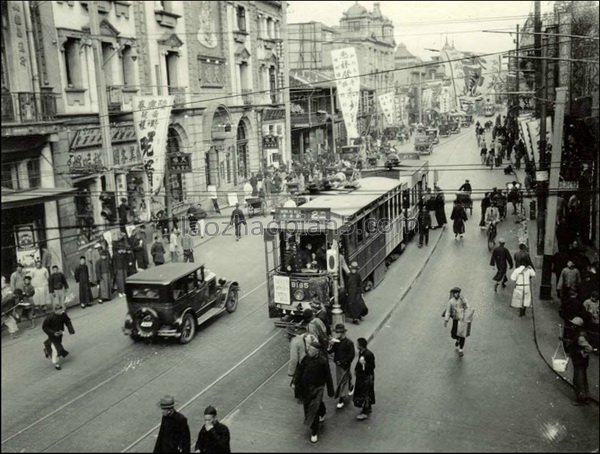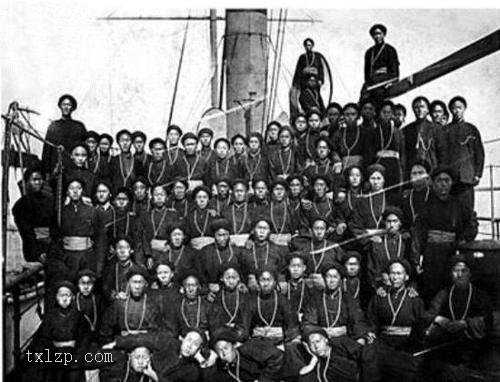Period:Yuan dynasty Production date:13thC-14thC
Materials:jade
Technique:polished (?), incised,
Subjects:horse/ass
Dimensions:Height: 4.70 centimetres Length: 9 centimetres
Description:
Recumbent horse of pale greenish jade with brown inclusions and flecking with soft polish.
IMG
![图片[1]-figure; paper-weight(?) BM-2022-3034.264-China Archive](https://chinaarchive.net/Yuan dynasty/Jades/657_2.jpg)
![图片[2]-figure; paper-weight(?) BM-2022-3034.264-China Archive](https://chinaarchive.net/Yuan dynasty/Jades/657_.jpg)
Comments:The caparisoned horse has a bridle and decorated saddle and coverings with finely incised mane and striated tail. The base is flat and undecorated. See Rawson 1995, p.373, cat.no.26.16. Yuan dynasty or later. Rather than suggesting supple movement, as was the case with 685 [2014,AsiaLoan,1.54], this horse is calm and static. It kneels four square with its legs tucked under its body. The arched neck is slightly lowered and the head curves gently down to a narrow mouth. Eyes, mouth and mane are carefully represented by incised lines and the muscles by deeply indented surfaces. Unlike the other horses, this one is caparisoned with saddle, saddle cloth and reins. On the saddle cloth, lozenges and key fret depict patterned cloth or leather. There is a four-petalled motif on the top of the saddle. The underside of the horse is flat and undecorated. It is probably a paper weight.There are a number of almost identical examples, implying that the saddled horse was a popular form. Such saddled horses offer a closer parallel to stone tomb sculpture than do the small realistic creatures represented by 685. There is a pair of kneeling horses at Xiaoling near Nanjing, the fourteenth-century tomb of the Hongwu emperor. Caparisoned horses appear both in earlier ceramic tomb models and in alter stone sculpture.
Materials:jade
Technique:polished (?), incised,
Subjects:horse/ass
Dimensions:Height: 4.70 centimetres Length: 9 centimetres
Description:
Recumbent horse of pale greenish jade with brown inclusions and flecking with soft polish.
IMG
![图片[1]-figure; paper-weight(?) BM-2022-3034.264-China Archive](https://chinaarchive.net/Yuan dynasty/Jades/657_2.jpg)
![图片[2]-figure; paper-weight(?) BM-2022-3034.264-China Archive](https://chinaarchive.net/Yuan dynasty/Jades/657_.jpg)
Comments:The caparisoned horse has a bridle and decorated saddle and coverings with finely incised mane and striated tail. The base is flat and undecorated. See Rawson 1995, p.373, cat.no.26.16. Yuan dynasty or later. Rather than suggesting supple movement, as was the case with 685 [2014,AsiaLoan,1.54], this horse is calm and static. It kneels four square with its legs tucked under its body. The arched neck is slightly lowered and the head curves gently down to a narrow mouth. Eyes, mouth and mane are carefully represented by incised lines and the muscles by deeply indented surfaces. Unlike the other horses, this one is caparisoned with saddle, saddle cloth and reins. On the saddle cloth, lozenges and key fret depict patterned cloth or leather. There is a four-petalled motif on the top of the saddle. The underside of the horse is flat and undecorated. It is probably a paper weight.There are a number of almost identical examples, implying that the saddled horse was a popular form. Such saddled horses offer a closer parallel to stone tomb sculpture than do the small realistic creatures represented by 685. There is a pair of kneeling horses at Xiaoling near Nanjing, the fourteenth-century tomb of the Hongwu emperor. Caparisoned horses appear both in earlier ceramic tomb models and in alter stone sculpture.
© Copyright
The copyright of the article belongs to the author, please keep the original link for reprinting.
THE END



![[Qing Dynasty] British female painter—Elizabeth Keith, using woodblock prints to record China from the late Qing Dynasty to the early Republic of China—1915-China Archive](https://chinaarchive.net/wp-content/uploads/2022/11/image-191x300.png)

